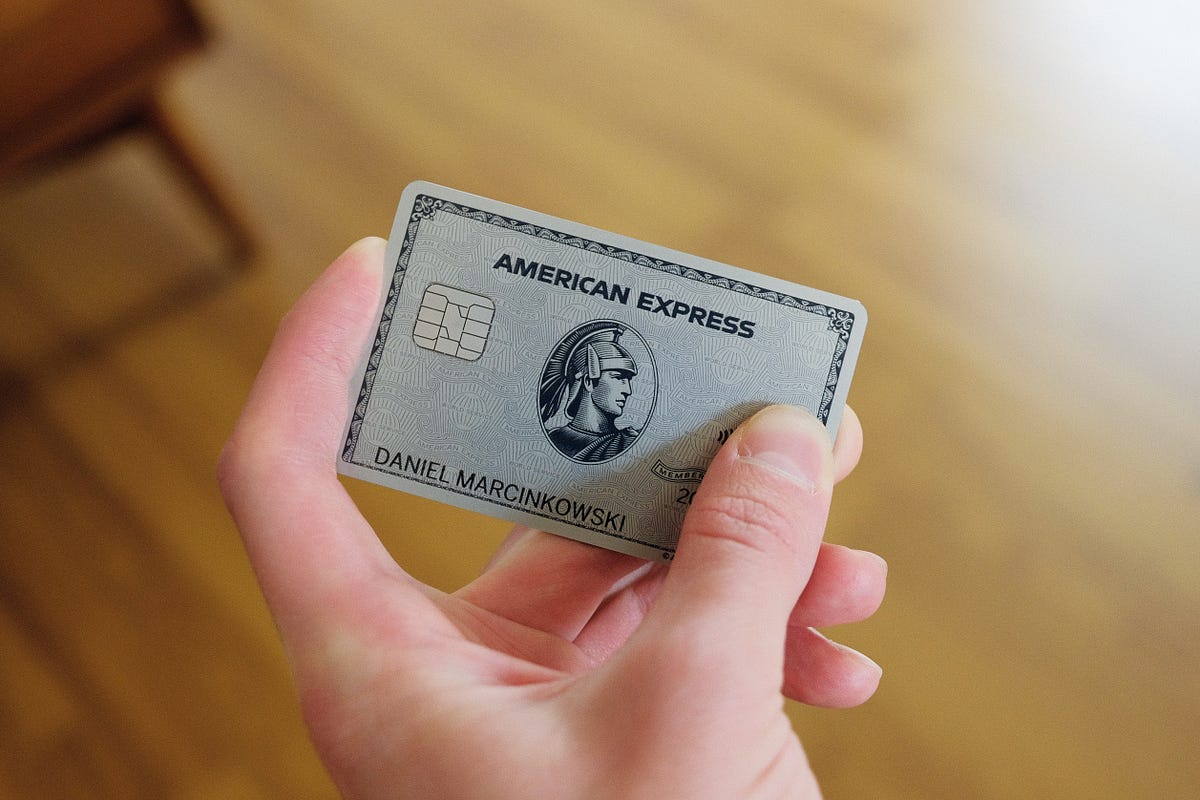Home>Finance>How Could You Make Sure That You Are Paying Yourself First Regularly And Building Up Your Savings


Finance
How Could You Make Sure That You Are Paying Yourself First Regularly And Building Up Your Savings
Published: January 16, 2024
Learn how to prioritize your finances and build up your savings by consistently paying yourself first. Take control of your financial future with these expert tips.
(Many of the links in this article redirect to a specific reviewed product. Your purchase of these products through affiliate links helps to generate commission for LiveWell, at no extra cost. Learn more)
Table of Contents
- Introduction
- What does it mean to pay yourself first?
- The importance of paying yourself first
- Steps to ensure regular payments to yourself
- Setting up automatic savings
- Prioritizing savings in your budget
- Reducing expenses to increase savings
- Increasing your income to save more
- Tracking and monitoring your savings progress
- Reaping the benefits of paying yourself first
- Conclusion
Introduction
Welcome to the world of personal finance, where you have the power to take control of your financial future. One key principle that is often emphasized is the concept of “paying yourself first.” But what does that actually mean? And why is it so important?
Paying yourself first is a simple yet powerful financial strategy that involves setting aside a portion of your income for savings before allocating funds to other expenses. In other words, it prioritizes saving over spending. This concept is often overlooked or misunderstood, but it can have a profound impact on your financial well-being.
As individuals, we have multiple financial responsibilities and obligations, from bills and debt repayments to everyday living expenses. It’s easy to get caught up in the cycle of paycheck-to-paycheck living, where there never seems to be enough money left over at the end of the month. However, by consciously making the decision to pay yourself first, you can break free from this cycle and start building a solid foundation for your financial future.
The idea behind paying yourself first is to treat savings as a non-negotiable expense, just like paying your rent or utility bills. By prioritizing savings, you are essentially making yourself a financial priority. This allows you to build up an emergency fund, save for retirement, achieve your financial goals, and ultimately create a sense of financial security.
In this article, we will explore why paying yourself first is so crucial, as well as provide you with practical steps on how to implement and maintain this financial habit. We’ll also discuss the benefits you can expect to reap by making this simple but impactful change in your financial mindset.
So, let’s dive in and discover how you can start paying yourself first regularly, and begin the journey towards financial stability and success.
What does it mean to pay yourself first?
At its core, paying yourself first means setting aside a portion of your income for savings before allocating funds to other expenses. It’s about prioritizing your own financial goals and future over other immediate wants and needs.
When you pay yourself first, you are essentially making your own financial well-being a priority. This means that before you pay your bills, go shopping, or indulge in discretionary expenses, you put a predetermined amount of money into savings. It’s like giving yourself a guaranteed paycheck every month.
This concept can be a game-changer because it shifts the traditional mindset of saving whatever is left over at the end of the month to proactively saving before any other expenses. By treating savings as a fixed expense, similar to other financial obligations, you are ensuring that a portion of your income is always dedicated to your future.
Paying yourself first not only sets a positive financial habit but also helps to build financial security and stability. It allows you to accumulate savings over time, establish an emergency fund for unexpected expenses, and work towards your long-term financial goals, such as buying a house or retiring comfortably.
While the specific amount you pay yourself may vary depending on your income and financial goals, the key is to consistently set aside a portion of your earnings. Whether it is 10% or 20% of your income, the act of paying yourself first remains the same.
Ultimately, paying yourself first is about taking control of your financial future and making your money work for you. It’s a mindset shift that puts you in the driver’s seat of your financial journey, allowing you to build wealth and achieve financial success.
In the next sections, we will explore the importance of paying yourself first and provide practical steps to help you incorporate this habit into your financial routine.
The importance of paying yourself first
Paying yourself first is not just a financial concept; it’s a mindset that can have a profound impact on your financial well-being. Here are some key reasons why paying yourself first is crucial:
1. Building a financial safety net
Life is full of unexpected events and emergencies that can put a strain on your finances. By paying yourself first and building up an emergency fund, you create a safety net that provides you with a sense of security. Having savings to fall back on in times of need can alleviate stress and prevent you from going into debt.
2. Working towards financial goals
Whether your goal is to buy a home, start a business, or retire comfortably, paying yourself first is the key to making your dreams a reality. By consistently saving a portion of your income, you are actively working towards achieving your financial goals. It puts you on a path to financial independence and gives you the freedom to pursue your passions and aspirations.
3. Breaking the paycheck-to-paycheck cycle
One of the biggest challenges many people face is living paycheck to paycheck, where their income is just enough to cover their expenses. By paying yourself first, you break free from this cycle. You prioritize saving and create a buffer that allows you to have some financial breathing room. This can lead to less stress, improved financial stability, and the ability to handle unexpected expenses without relying on credit.
4. Taking control of your financial future
When you pay yourself first, you are taking ownership of your financial future. You are no longer relying on luck or chance to build wealth. Instead, you are actively and intentionally working towards your financial goals. This empowerment gives you a sense of control and allows you to shape your financial destiny.
5. Building wealth and achieving financial independence
By consistently paying yourself first and making saving a habit, you are laying the foundation for long-term wealth accumulation. The money you save can be invested and grow over time. This compounding effect can significantly increase your net worth and help you achieve financial independence. It opens up opportunities for early retirement, travel, and a life free from financial worries.
Paying yourself first is not just about saving money; it’s about prioritizing your financial well-being and setting yourself up for a bright future. In the following sections, we will discuss practical steps to ensure regular payments to yourself and build up your savings.
Steps to ensure regular payments to yourself
Now that you understand the importance of paying yourself first, let’s explore some practical steps you can take to ensure regular payments to yourself and build up your savings:
1. Set specific savings goals
Start by setting clear and achievable savings goals. Determine what you are saving for, whether it’s an emergency fund, a down payment on a house, or retirement. By having specific goals in mind, you will have a clearer sense of purpose and motivation to save.
2. Calculate and allocate a fixed percentage of your income
Determine a percentage of your income that you can comfortably allocate towards savings. Aim for at least 10% to start, but ideally, try to save 20% or more if possible. Calculate this percentage based on your net income (income after taxes and deductions) to ensure that you’re saving a consistent amount every month.
3. Automate your savings
Take advantage of automation by setting up automatic transfers from your checking account to your savings account. This way, a predetermined amount of money will be automatically moved to your savings each month, without any effort on your part. It eliminates the temptation to spend the money and ensures that you consistently pay yourself first.
4. Treat savings as a non-negotiable expense
View your savings as an essential expense, just like your rent or utility bills. When you receive your paycheck, make it a priority to transfer the allocated amount to your savings account immediately. Resist the temptation to use that money for other discretionary expenses. By treating savings as a non-negotiable expense, you create a habit of paying yourself first.
5. Prioritize savings in your budget
When creating your monthly budget, ensure that savings is one of the first categories you allocate funds to. By prioritizing your savings goals and making them a priority, you’re less likely to spend the money on non-essential items. Adjust your other spending categories accordingly to accommodate your savings goals.
6. Reduce expenses to increase savings
Look for opportunities to cut back on your expenses and redirect those savings towards your personal savings. This can include reducing discretionary spending, finding cheaper alternatives for everyday purchases, or negotiating bills to get better rates. The more you can cut back on unnecessary expenses, the more you can allocate towards paying yourself first.
7. Increase your income to save more
Consider ways to increase your income to boost your savings. This could include taking on a side gig, freelance work, or exploring opportunities for career advancement. By earning more money, you can allocate a larger percentage towards your savings goals and reach them faster.
8. Track and monitor your savings progress
Maintain a record of your savings progress to stay motivated and see the impact of paying yourself first. Use tools or apps to track your savings goals and monitor your progress over time. Celebrate small milestones and use them as motivation to keep going.
By following these steps and staying committed to paying yourself first, you can ensure regular payments to yourself and build up your savings. It’s a powerful habit that sets the foundation for financial success and provides you with the peace of mind that you are taking control of your financial future.
Setting up automatic savings
One of the most effective ways to ensure regular payments to yourself is by setting up automatic savings. Automating your savings process takes the effort out of manually transferring money to your savings account and helps you stay consistent with your savings goals. Here’s how you can set up automatic savings:
1. Choose a dedicated savings account
Start by selecting a dedicated savings account where you will deposit your automatic savings. Look for a high-yield savings account that offers competitive interest rates to maximize your savings over time. Consider choosing an account that is separate from your regular checking account to reduce the temptation to dip into your savings for everyday expenses.
2. Set up direct deposit
If your employer offers direct deposit, take advantage of this convenient feature. Speak with your human resources or payroll department to allocate a portion of your paycheck directly into your savings account. You can specify a fixed amount or a percentage of your income to be automatically transferred each pay period. This ensures that your savings are prioritized from the moment your paycheck is deposited.
3. Use automatic transfers
If direct deposit is not an option or you receive income from multiple sources, you can set up automatic transfers from your checking account to your savings account. Most banks allow you to schedule recurring transfers on specific dates each month. Choose a date that aligns with your payday or when you typically have surplus funds in your checking account. By automating the transfer, you ensure that a predetermined amount is consistently moved to your savings account without any manual effort on your part.
4. Consider round-up apps or programs
Another option to automate your savings is by using round-up apps or programs. These apps automatically round up your everyday purchases to the nearest dollar and transfer the spare change into your savings account. This simple method allows you to save without even noticing it. You can link your debit or credit card to an app and let it do the work for you. It’s a great way to start saving if you’re just getting started or want to supplement your automatic transfers.
5. Review and adjust periodically
While automatic savings make it easy to consistently save, it’s important to review your savings plan periodically. Regularly assess your savings goals, income, and expenses to ensure that your automatic savings align with your current financial situation. Make adjustments as needed to ensure that you’re saving an appropriate amount and staying on track to reach your goals.
Setting up automatic savings takes the guesswork and effort out of saving money. It ensures that you consistently pay yourself first and build up your savings without relying on willpower alone. By automating your savings, you create a habit of saving and make progress towards your financial goals with minimal effort.
Prioritizing savings in your budget
When it comes to paying yourself first and building up your savings, it’s essential to prioritize savings in your budget. By making savings a top priority, you ensure that you allocate a portion of your income towards your financial goals. Here are some steps to help you prioritize savings in your budget:
1. Determine your income and expenses
Start by assessing your income and expenses. Calculate your monthly income after taxes and deductions, and then list out your regular expenses, including bills, rent or mortgage, groceries, transportation costs, and any other fixed expenses. This will give you a clear overview of your financial situation and help you understand how much you can allocate towards savings.
2. Set a savings goal
Decide on a specific savings goal that you want to achieve. It could be a certain amount of money you want to save each month or a target amount you want to reach within a specific timeframe. Having a clear savings goal gives you something to work towards and helps you determine the amount you need to prioritize in your budget.
3. Pay yourself first
Once you have determined your income and expenses and set a savings goal, make it a point to pay yourself first. Treat savings as an essential expense and allocate a portion of your income towards savings before spending on other non-essential items. This ensures that you prioritize your financial goals and make saving a non-negotiable part of your budget.
4. Create a separate savings category
Within your budget, create a separate category specifically for savings. This allows you to clearly track and allocate funds towards your savings goal. Whether you use budgeting software or a simple spreadsheet, having a dedicated category makes it easier to see how much you are setting aside for savings each month.
5. Determine a realistic savings amount
Based on your income and expenses, calculate a realistic savings amount that you can comfortably contribute each month. Aim to save at least 10% of your income, but if possible, try to increase the amount to 20% or more. If you find it challenging to save a significant percentage, start with a smaller amount and gradually increase it as your financial situation improves.
6. Adjust other spending categories
Once you’ve determined your savings amount, adjust your other spending categories to accommodate your savings goal. Look for areas where you can cut back or make adjustments to free up additional funds for savings. This might involve reducing discretionary expenses, finding more affordable alternatives, or renegotiating bills to lower monthly payments.
7. Review and revise your budget regularly
Regularly review and revise your budget to ensure it aligns with your financial goals. As your income, expenses, and priorities change, make adjustments to your budget accordingly. Periodically assess your progress towards your savings goal and make any necessary revisions to stay on track.
Prioritizing savings in your budget requires discipline and consistency. By making savings a top priority, you ensure that you are actively working towards your financial goals and building a solid foundation for your future financial well-being.
Reducing expenses to increase savings
One effective way to boost your savings is by reducing expenses. By cutting back on discretionary spending and finding ways to save on everyday expenses, you can free up more money to allocate towards your savings goals. Here are some strategies to help you reduce expenses and increase your savings:
1. Track your spending
Start by tracking your expenses to get a clear understanding of where your money is going. Use budgeting apps or spreadsheets to categorize your spending and identify areas where you can cut back. This awareness will help you make informed decisions about where to reduce expenses.
2. Prioritize needs over wants
When evaluating your expenses, distinguish between needs and wants. Focus on cutting back on non-essential items and discretionary spending. Ask yourself if a certain expense is necessary or if it can be postponed or eliminated altogether. By prioritizing needs over wants, you can significantly reduce your expenses.
3. Review and renegotiate bills
Take the time to review your monthly bills and look for opportunities to save. Contact your service providers, such as internet, cable, or insurance companies, and negotiate better rates or discounts. Compare prices from different providers to see if you can get a better deal elsewhere. Don’t be afraid to ask for discounts or promotions to lower your monthly expenses.
4. Cut back on dining out and entertainment
Eating out or going to entertainment venues can be a significant drain on your finances. Consider reducing the frequency of dining out and opt for home-cooked meals instead. Look for free or low-cost entertainment options such as parks, community events, or streaming services, rather than expensive outings. Small adjustments in these areas can lead to substantial savings.
5. Reduce impulse purchases
Avoid impulse purchases by implementing a 24-hour rule. Whenever you feel the urge to buy something non-essential, wait for 24 hours. This will give you time to reflect on whether you truly need the item or if it was an impulsive decision. You may find that after the waiting period, you no longer feel the strong desire to make the purchase, saving you money in the process.
6. Seek out discounts and coupons
Take advantage of discounts, coupons, and loyalty programs to save on everyday purchases. Look for deals online, use coupon websites or mobile apps, and sign up for newsletters or loyalty programs to access exclusive discounts. These small savings can add up over time and contribute to your overall savings goals.
7. Cut back on subscriptions
Review your subscriptions and consider canceling or reducing those that you don’t fully utilize or need. Assess your streaming services, gym memberships, magazine subscriptions, or any other recurring expenses. Eliminating or reducing unnecessary subscriptions can free up extra funds that can be redirected towards savings.
8. Embrace frugal living
Adopting a frugal mindset can help you save significantly. Look for ways to be more resourceful and find cost-effective alternatives. Plan meals and grocery shop with a shopping list to avoid unnecessary purchases. Embrace DIY projects and repairs instead of hiring someone else. Focus on the value and long-term benefits of your purchases rather than short-term gratification.
Reducing expenses requires discipline and a willingness to make conscious choices about how you spend your money. By employing these strategies and finding ways to save, you can increase your savings and accelerate your progress towards your financial goals.
Increasing your income to save more
If you find it challenging to save a significant amount of money from your current income, one effective strategy is to increase your income. By earning more money, you can allocate a larger portion towards savings and accelerate your progress towards your financial goals. Here are some ways to increase your income and save more:
1. Negotiate a raise or promotion
If you’ve been with your current employer for some time and have proven your value, consider negotiating a raise or promotion. Research industry standards for your position and present a compelling case to your employer highlighting your achievements, skills, and contributions. A salary increase can provide you with extra funds to save without having to rely on additional sources of income.
2. Take on a side gig or freelance work
Consider taking on a side gig or freelance work to supplement your primary income. You can offer your skills or services on platforms such as Fiverr, Upwork, or TaskRabbit. Additionally, you could pursue part-time work on weekends or evenings that aligns with your interests and expertise. The additional income from a side job can be designated specifically for your savings goals.
3. Start a small business or pursue entrepreneurship
If you have a passion or a unique skill set, consider starting your own small business or pursuing entrepreneurship. It could be anything from offering tutoring services to starting an online store or consulting business. While starting a business requires effort and dedication, it has the potential to generate substantial income and provide you with more control over your financial future.
4. Invest in professional development and education
Investing in your education and professional development can open up new opportunities for career advancement and increased income. Consider acquiring new certifications, attending workshops, or pursuing higher education to enhance your skills and knowledge. By expanding your expertise, you become more valuable in the job market, increasing your earning potential.
5. Explore passive income streams
Passive income streams can provide a steady stream of income with minimal effort over time. This can include rental properties, dividend-paying stocks, or investing in peer-to-peer lending platforms. While passive income often requires an initial investment or effort, it can generate ongoing income and increase the amount available for savings without additional work.
6. Leverage your hobbies and talents
Monetize your hobbies and talents by turning them into income-generating opportunities. If you have a talent for writing, photography, or crafting, consider selling your creations or offering your services on platforms like Etsy or freelancing websites. Leveraging your skills and passions not only provides additional income but can also be personally fulfilling.
7. Network and seek out new opportunities
Expand your professional network and actively seek out new opportunities. Attend industry conferences, join professional associations, and connect with like-minded individuals who can potentially provide job leads or partnerships. Networking can lead to new connections and opportunities to increase your income.
Increasing your income is a proactive approach to save more money and reach your financial goals faster. By taking advantage of these strategies and finding ways to earn more, you can allocate a larger portion towards savings and improve your financial situation.
Tracking and monitoring your savings progress
Tracking and monitoring your savings progress is essential to stay motivated, make adjustments, and ensure that you’re on track to reach your financial goals. By having a clear understanding of your progress, you can make informed decisions and stay accountable to your savings plan. Here are some steps to effectively track and monitor your savings progress:
1. Set specific milestones
Break down your savings goal into specific milestones or checkpoints. For example, if your goal is to save $10,000, you can set milestones at $2,500 increments. These milestones serve as mini-goals that you can celebrate along the way, keeping you motivated and focused on your savings progress.
2. Use a tracking system
Utilize a tracking system to visually represent your savings progress. This can be as simple as creating a savings tracker in a spreadsheet or using a mobile app that automatically calculates and displays your progress. Update your tracker regularly and review it to see how far you’ve come and how close you are to reaching your milestones.
3. Regularly review your budget
Review your budget on a regular basis to ensure that your savings goals align with your current financial situation. Assess your income, expenses, and savings allocation to see if any adjustments need to be made. By regularly examining your budget, you can identify areas where you can cut back or reallocate funds to accelerate your savings progress.
4. Stay motivated with visual reminders
Keep visual reminders of your savings goals in sight to help you stay motivated. You can create a vision board with images that represent your financial goals or write down your goals and place them where you can see them every day. This constant reminder serves as a motivator and reinforces your determination to stay committed to your savings plan.
5. Celebrate milestones
Celebrate reaching your savings milestones. Reward yourself with a small treat or celebrate in a way that aligns with your budget and values. These celebrations can provide a sense of accomplishment and boost your motivation to continue saving. Celebrating milestones also helps to reinforce positive financial habits and creates a positive association with saving money.
6. Seek accountability and support
Find an accountability partner or join a savings challenge group to help you stay accountable and motivated. Share your savings goals with someone you trust who can provide support, encouragement, or even engage in friendly competition. By having someone to hold you accountable, you are more likely to stick to your savings plan and stay on track.
7. Conduct regular check-ins
Regularly check in with your progress and reassess your savings goals. Determine if you need to adjust your timeline, increase or decrease your savings rate, or modify your approach. Life circumstances can change, and it’s important to stay flexible and adaptable. By conducting regular check-ins, you can make necessary adjustments to keep your savings plan aligned with your current financial situation.
By tracking and monitoring your savings progress, you remain engaged and in control of your financial goals. It allows you to celebrate your achievements, make necessary adjustments, and ultimately, reach your desired level of financial stability and success.
Reaping the benefits of paying yourself first
When you commit to paying yourself first and consistently prioritize savings, you will begin to experience an array of benefits that can positively impact your financial well-being and overall quality of life. Here are some of the key benefits you can expect to reap by making paying yourself first a financial habit:
1. Financial security and peace of mind
By building up your savings through paying yourself first, you create a financial safety net. This provides a sense of security and peace of mind, knowing that you have funds set aside for emergencies or unexpected expenses. Financial security allows you to navigate through life’s uncertainties without the stress of being caught off guard or relying on debt to cover expenses.
2. Progress towards financial goals
When you prioritize savings, you make clear progress towards your financial goals. Whether it’s saving for a down payment on a home, funding your children’s education, or planning for retirement, paying yourself first helps you achieve these milestones. Regular contributions build up over time and put you on track to meet your objectives faster than if you were saving sporadically.
3. Flexibility and freedom of choice
Having savings provides you with flexibility and the freedom to make choices aligned with your values and priorities. You’ll have the option to pursue career changes, start a business, take time off work, or travel without worrying about financial stability. Having a financial cushion allows you to seize opportunities and creates a greater sense of control over your life.
4. Reduced financial stress and improved well-being
Financial stress can have a significant impact on mental and emotional well-being. By paying yourself first, you alleviate the stress of living paycheck to paycheck and constantly worrying about money. By establishing a solid savings foundation, you experience greater peace of mind, reduced anxiety, and an overall improved sense of well-being.
5. Preparation for emergencies and unexpected expenses
Life is full of unexpected events such as medical emergencies, car repairs, or job loss. By paying yourself first and building up an emergency fund, you are prepared to handle these situations without plunging into debt or financial turmoil. Having savings gives you the confidence and ability to face unforeseen circumstances without financial strain.
6. Increased financial confidence and empowerment
As you see your savings grow through paying yourself first, your financial confidence and sense of empowerment will increase. You’ll feel more in control of your financial destiny, knowing that you are consistently taking steps towards your goals and building a brighter future. This confidence can spill over into other areas of your life, leading to more significant accomplishments and a higher level of overall well-being.
7. Enhanced opportunities for wealth accumulation
By paying yourself first and consistently saving, you create opportunities for wealth accumulation. The money you save can be invested to potentially generate even more significant returns over time. This can lead to long-term wealth building, allowing you to achieve financial independence, retire comfortably, or enjoy a higher quality of life.
By reaping these benefits, paying yourself first becomes more than just a financial habit — it becomes a lifelong strategy for success. The discipline and commitment to prioritize your own financial future will pave the way towards greater financial security, freedom, and fulfillment.
Conclusion
Paying yourself first is a powerful financial strategy that can transform your financial future. By prioritizing savings and making it a non-negotiable part of your budget, you take control of your financial well-being and open the door to a multitude of benefits.
When you pay yourself first, you build a financial safety net, work towards your financial goals, and break free from the paycheck-to-paycheck cycle. It empowers you to take control of your financial future, providing flexibility and freedom of choice. The reduced financial stress and improved well-being that comes with having savings are invaluable.
Setting up automatic savings, prioritizing savings in your budget, reducing expenses, increasing your income, and tracking your progress are key steps to ensure regular payments to yourself. By following these steps, you establish a solid foundation for financial success and security.
Reaping the benefits of paying yourself first includes financial security, progress towards goals, flexibility, reduced stress, and increased financial confidence. The opportunities for wealth accumulation and overall well-being are immense.
So, embrace the concept of paying yourself first and make it a financial habit. Personal finance is about taking control of your financial destiny. By paying yourself first, you are prioritizing your financial well-being and setting yourself up for a brighter and more prosperous future.
Start today. Pay yourself first. Your future self will thank you.














